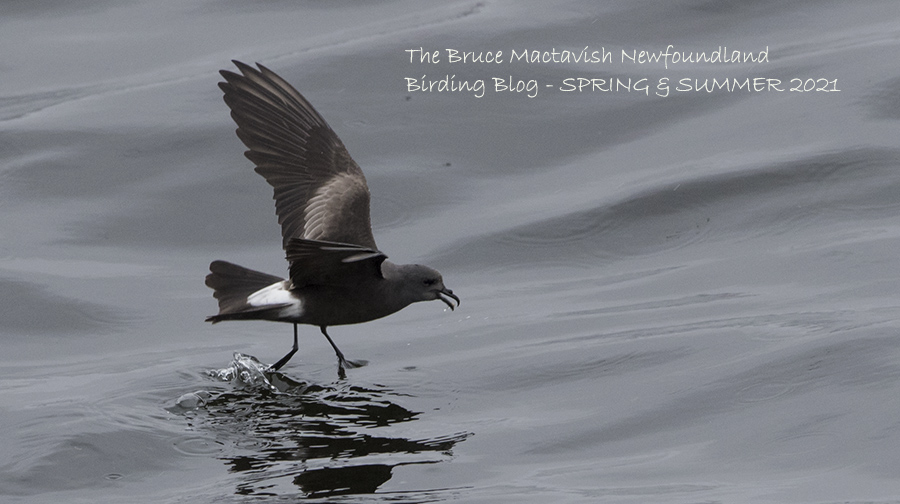The rarity value placed on a bird's head is all relative. The Bahama Woodstar in Pennsylvania last week was gargantuan on any rarity scale outside of the Bahamas. A bird common in your neighbourhood, say Black Guillemot, would be an off the rarity scale in the state of Iowa. This introduction is how I explain to any mainland readers of this blog why Ken Knowles, John Wells and I left St. John's at 4:30 am this morning and drove 2 hours and 50 minutes to Sandy Cove, Eastport Pen to see a White-breasted Nuthatch.
It was the second record for Newfoundland. The first record only two years previous at St. Lawrence, Burin Pen was completely unexpected for a bird with a marginal record of migratory movements. It is fairly common in the adjacent province of Nova Scotia. The St. Lawrence bird was at least on a southward facing coast where a vagrant bird blown off the coast of Atlantic Canada or New England States might end up after a long flight over the water with a tail wind. Sandy Cove is on the Eastport Peninsula facing the northeast. The Eastport Peninsula has a good list of European vagrants from over the years because it faces the northeast, i.e. Euro Oyc, Common Redshank and several occurrences for Euro Golden Plover. Word of a White-breasted Nuthatch appearing at a feeder in Sandy Cove on 23 April was almost passed off as too unlikely to be true until a photo arrived.
The rest is history in the making. Why and when this bird ended up on the east coast of Newfoundland in April is incomprehensible at this time. It does not match any patterns. But there is no doubt the bird was there. It did some calling which sounded like the calls commonly heard from eastern North America.
Any day you see the unexpected is a good day even if it is a White-breasted Nuthatch.
Newfoundland`s second ever White-breasted Nuthatch was just too rare not to see.

No comments:
Post a Comment
Note: only a member of this blog may post a comment.